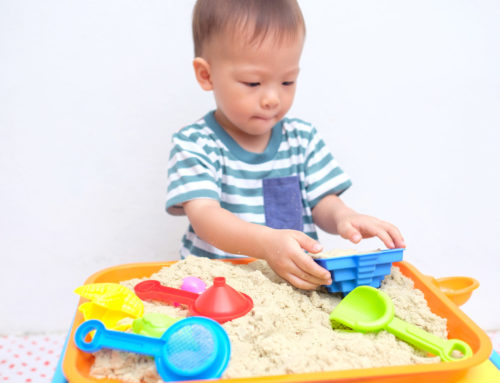By: Stephanie Shabangu, Penfield Children’s Center
Reviewed by: Patty Cotter, PT, C/NDT, Physical Therapy and Occupational Therapy Department Supervisor and Jayne Emerson, OTR, Penfield Children’s Center
These days, stores abound with adorable baby shoes of all shapes and colors. It can be tempting to pick out the cutest furry boots or sparkly sandals for your tot. While these shoes might look charming in photos, are they really a great fit for little feet?
When children are first learning to walk, the American Academy of Pediatrics (AAP) recommends shoes that allow toddlers to grip the ground with their toes. And, since young children don’t need arch support while learning to walk, shoes that mimic the flexibility of bare feet are best. In fact, inside and when the weather permits, it is best to let your little one explore without shoes and socks on. However, when the temperature dips or the surface of the ground is rocky or uneven, it is a good idea to protect his/her feet with shoes.
When picking out your child’s first pair of shoes, the AAP recommends that shoes should:
- Be flexible and light to promote the natural movement of the foot
- Have rubber bottoms to reduce slipping
- Be manufactured out of soft, breathable material (such as mesh) to regulate temperature
It’s also important to consider:
- Style of shoe: Make sure to avoid shoes with heals or thick soles. These can be tripping hazards and can easily put a toddler off balance.
- Toe room: A child’s shoe should have about a ½ inch between the top of the shoe and his/her longest toe.
- Shoes should not be too loose or tight. When your child takes a step, the part of the shoe under the laces should slightly crease.
In addition to keeping these tips in mind, there are special considerations when choosing shoes for a child with a disability. For example, children who wear an ankle foot orthosis (AFO) might need a size larger shoe than would fit on their feet without the brace. Luckily, there are shoes available to help fit children who wear AFOs, so it’s important to talk to your child’s pediatrician or therapist to discuss options.
Furthermore, children with Sensory Processing Disorder (SPD) might have difficulties wearing shoes and socks, or walking with bare feet. To help your child feel as comfortable as possible in shoes and socks, try rubbing the bottom of the feet with a soft towel or giving the feet a firm pressure message prior to putting on socks. It can also be helpful to try different types of socks such as tight, seamless or very soft. As with all children who have SPD, new sensations can be very scary, so it’s important to allow texture changes to take place slowly. Patience is key!
When it is time to purchase a new pair of shoes for your child, if possible, take him to the store and allow him to walk or toddle in them. A sales associate can also help measure your child’s food to ensure you find the correct size.
What shoes work best on your child’s growing feet?
References:
http://www.parenting.com/article/ask-dr-sears-first-shoes
http://www.parenting.com/baby/gear/best-baby-shoes-early-walkers







